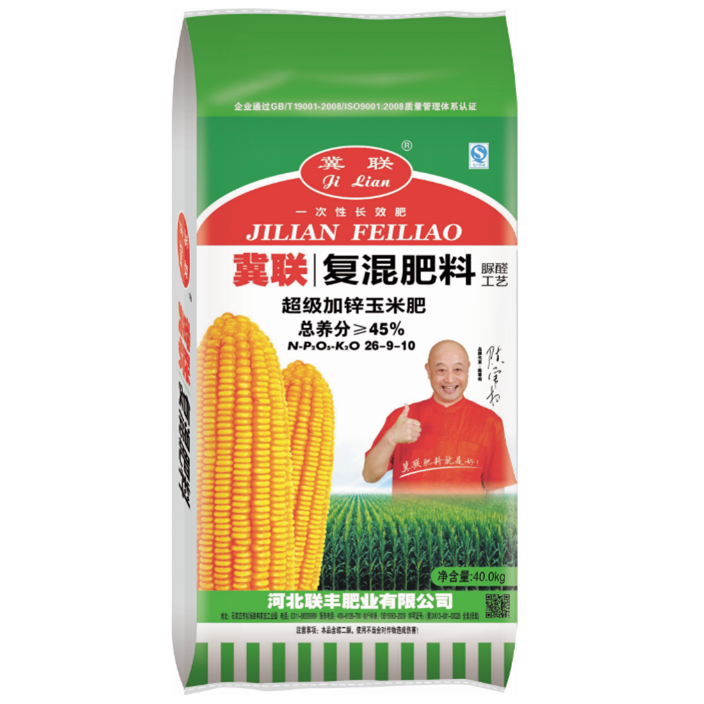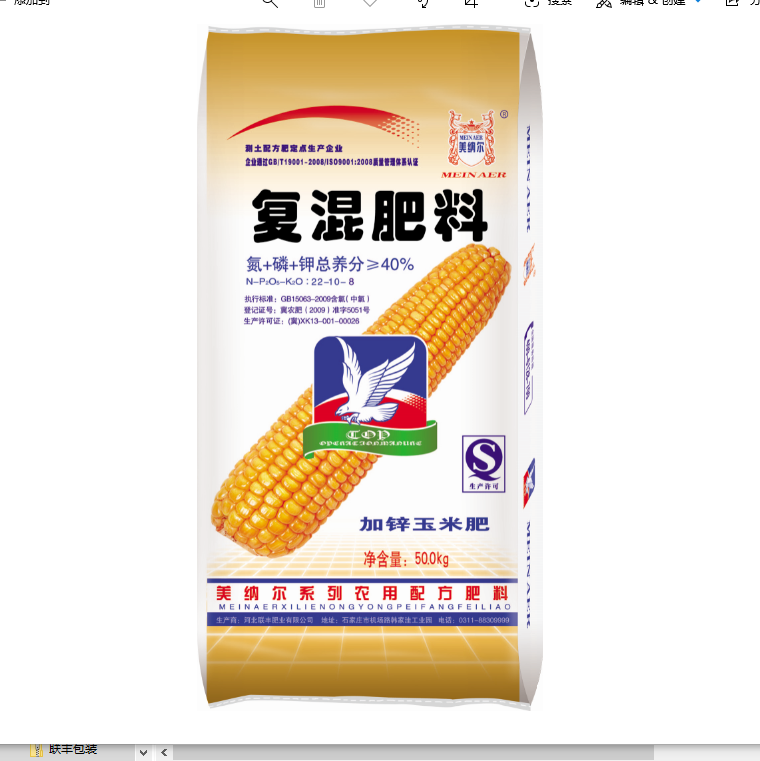
Ago . 16, 2023 15:15 De volta à lista
Full Fertilization Plan for Corn: Maximizing Crop Yield and Efficiency
Full Fertilization Plan for Corn: Maximizing Crop Yield and Efficiency
Corn, a vital staple in grain production, heavily relies on scientific fertilization to achieve optimal growth and yield. However, blind fertilization practices, such as excessive nitrogen usage and insufficient application of potash and micro-fertilizer, have resulted in imbalanced soil nutrients and reduced fertilizer use efficiency. To overcome these challenges, it is crucial to implement a well-informed and strategic fertilization plan based on the specific nutrient requirements of corn.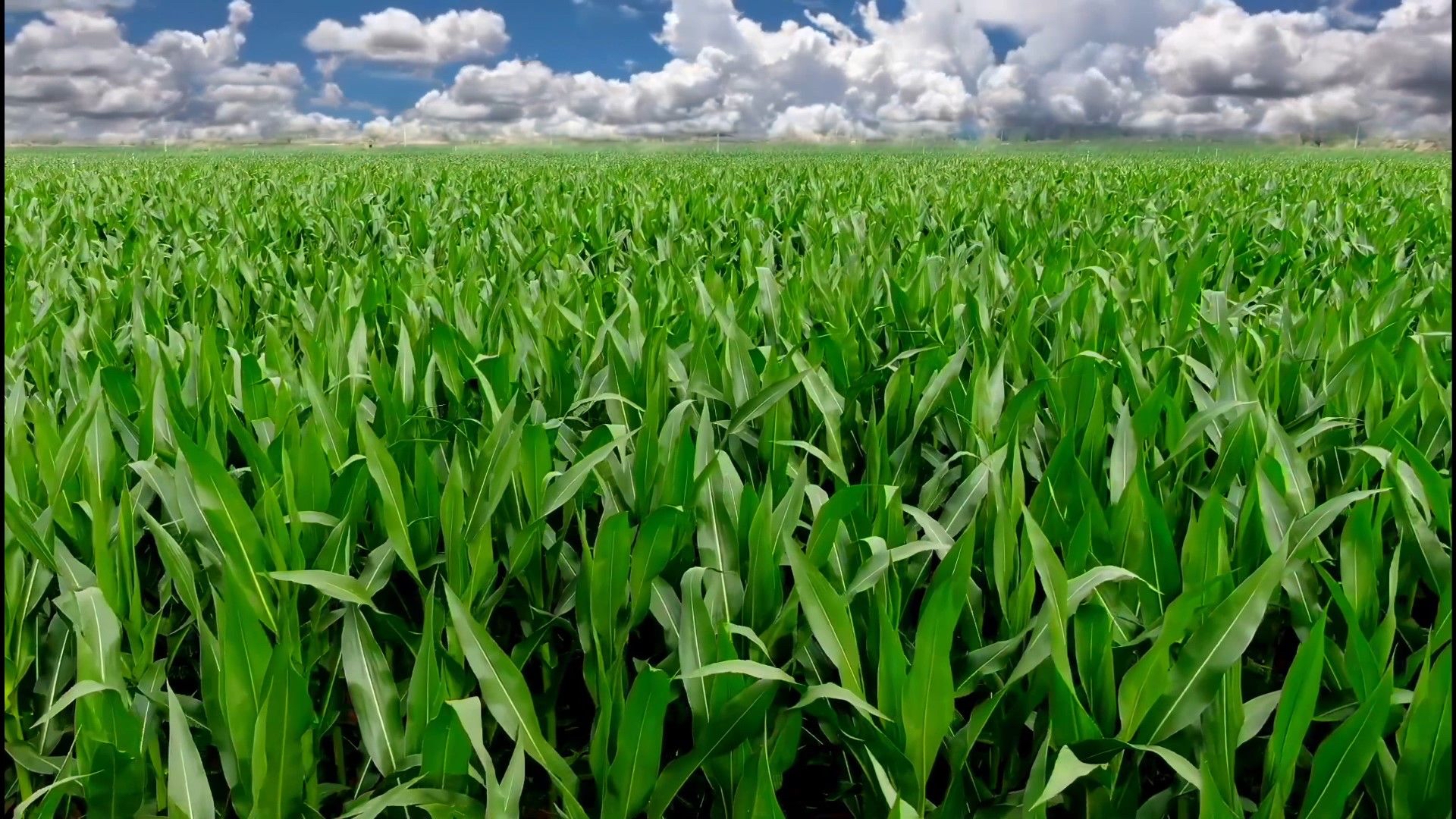
During the growth and development stages of corn, the quantity and dynamics of various nutrients absorbed from the soil vary. Nitrogen, phosphorus, and potassium, commonly referred to as NPK, are essential macronutrients for corn. Nitrogen is the most important, followed by potassium, while phosphorus is the least required. For every 100 kilograms of grain produced, corn absorbs approximately 3.43 kilograms of nitrogen (N), 1.23 kilograms of phosphorus (P2O5), and 3.26 kilograms of potassium (K2O). The ideal ratio of nitrogen, phosphorus, and potassium is 3:1:2.8.
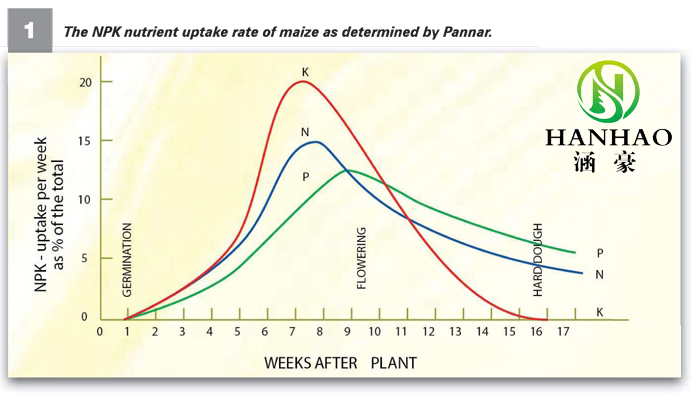
Another key aspect to consider is that nutrient absorption rates and quantities vary throughout different growth periods. During the seedling stage, corn absorbs fewer nutrients. However, nutrient uptake significantly increases from the jointing to the flowering stage, with a rapid absorption rate and larger quantities required. As the plant enters the later stages of growth, nutrient absorption gradually slows down, resulting in a decrease in the amount of nutrients needed.
According to the law of nutrient absorption during the growth period of corn, the fertilization principle includes several key steps. Firstly, it is essential to apply sufficient base fertilizer to meet the initial nutrient requirements of the crop. Secondly, during the seedling stage, a lighter application of seedling fertilizer should be implemented. As the corn plant progresses to the jointing stage, a heavier application of joint fertilizer is recommended to sustain the increased nutrient demands. Finally, it is crucial to skillfully apply granular fertilizer, taking into account the specific nutrient requirements of the crop, to ensure balanced nutrition throughout the growth cycle.
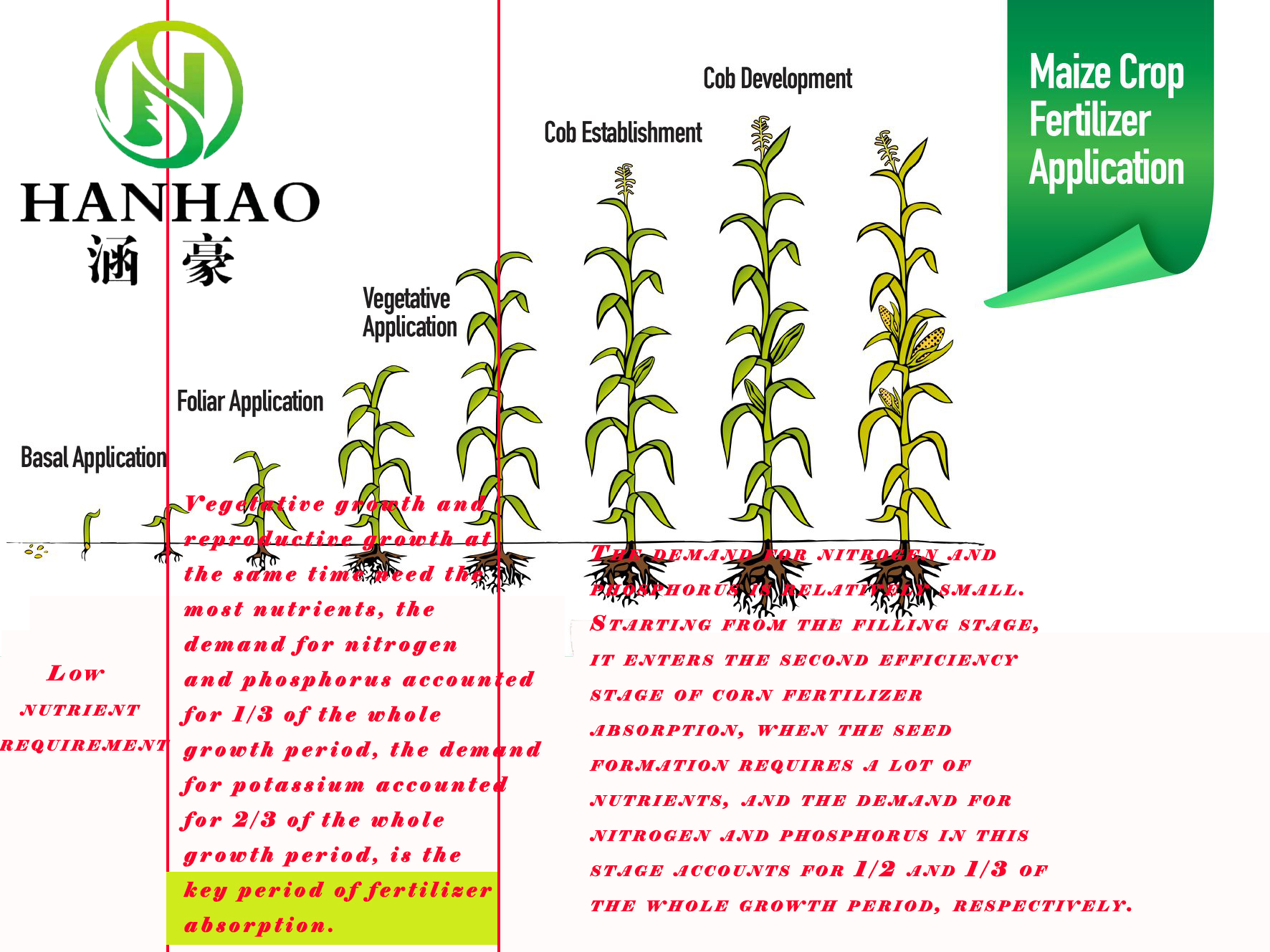
Effective Fertilization Plan for Boosting Corn Yield
Corn farmers have been advised to adopt a strategic fertilization plan to maximize their crop yields. According to experts, understanding the law of corn fertilizer demand is crucial, with the principle of "basic fertilizer as the main fertilizer and top dressing as supplementary" being the key. By implementing this technology, farmers can provide the necessary nutrition for the entire growth period of corn, ensuring a strong foundation for high and stable yields.
The fertilization plan consists of four main stages: base fertilizer, Miao fertilizer, spike fertilizer, and grain fertilizer. Each stage plays a vital role in promoting the growth and development of corn plants, resulting in multiple and larger spikes.
The first stage is the application of base fertilizer. This step should be done once when the cultivated land is raised, concentrated between 10-15cm of the cultivated layer. Farmers are recommended to use Stanley compound fertilizer, such as 28-6-8 for corn or 26-10-15 for corn new power. The recommended amount is 40-60kg/mu. The purpose of this stage is to provide essential nutrients for the entire growth period of corn, laying a strong foundation for high yields.
The second stage, known as Miao fertilizer, should be applied after seedling setting. Farmers are advised to use high-nitrogen compound fertilizer, such as NPK 26-9-10, in the amount of 10-15kg/mu. The fertilizer should be applied along with the seedlings, keeping it at a distance of 10-15cm. This stage promotes the growth of roots, leaves, seedlings, and stems, providing a solid foundation for the development of multiple and larger spikes.
The third stage focuses on spike fertilizer, which should be applied during the knuckle joint to tasseling stage. High-nitrogen compound fertilizer, such as NPK 22-10-8, can be used in the amount of 15-25kg/mu. It is recommended to combine this fertilizer with spraying potassium dihydrogen phosphate for better results. Spike fertilizer is essential in determining the size and number of grains in the ears, especially during the big bell mouth period when a combination of fertilizer and water can promote larger ears and more grains in summer corn.
The fourth and final stage is grain fertilizer, which is applied as top dressing outside the root. This stage occurs during the booting stage and early stage of grouting. Farmers are advised to use water-soluble fertilizer with a large number of elements, such as potassium dihydrogen phosphate and special function packages. The application of granular fertilizer during this stage prolongs the time of photosynthesis of functional leaves, preventing premature aging of roots, stems, and leaves. It also promotes grain filling and increases grain weight.
By following this strategic fertilization plan, corn farmers can optimize their crop yields and achieve high and stable production. Experts emphasize the importance of understanding the specific fertilizer requirements at each growth stage to provide the necessary nutrition for corn plants. The adoption of such a plan ensures healthy plant growth and maximizes the potential for larger ears and greater grain production.
One important aspect of fertilizer application is applying nitrogen in stages. Farmers are encouraged to appropriately reduce the application ratio of base fertilizer and increase the application ratio of topdressing fertilizer. By avoiding a "one shot" approach and spreading out the application, nitrogen absorption by crops can be optimized, resulting in healthier plants and higher yields.
Similarly, when it comes to potassium fertilizers, farmers are advised to assess the status of potassium in their soil. By efficiently applying potassium fertilizer based on soil conditions, farmers can ensure the nutrient needs of their crops are met. Additionally, paying attention to the combined application of zinc and boron fertilizers helps address potential deficiencies and improves plant health and productivity.
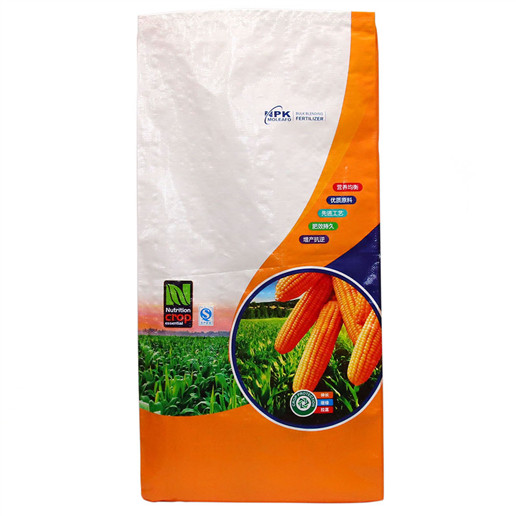
Furthermore, integrating fertilizer application with other agricultural practices such as using agricultural machinery and agronomy techniques, reasonable planting density, and water-saving irrigation is crucial. Popularizing innovative methods like chemical fertilizer strip application, hole application, calcium ammonium nitrate, and slow-release fertilizer technologies contribute to the overall efficiency of crop production.
In conclusion, the recent agricultural guidelines emphasize the significance of adopting advanced fertilizer application techniques to optimize crop yield and quality. By utilizing methods such as staged nitrogen application, efficient potassium fertilization, and combined zinc and boron application, farmers can enhance plant health and productivity. When complemented with high-yield cultivation techniques, water-saving irrigation, and innovative fertilizer technologies, these practices contribute to reducing costs while maximizing economic benefits. Implementing regular soil testing and adopting precision fertilization methods further enhances productivity, ensuring sustainable and profitable agricultural practices.
-
What is the Difference Between Compound Fertilizer and Mixed Fertilizer?
NotíciasFeb.27,2024
-
Organic Fertilizer VS Inorganic Fertilizer
NotíciasDec.28,2023
-
The role of various elements in water -soluble fertilizers in grapes
NotíciasNov.24,2023
-
Which NPK compound fertilizer formula is the right choice
NotíciasSep.25,2023
-
Meeting the World’s Increasing Food Demands with Advanced Crop Nutrition
NotíciasSep.11,2023
-
NPK compound fertilizers: Enhancing plant growth and agricultural productivity
NotíciasAug.25,2023

